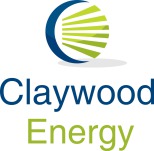
Solar Thermal
Solar thermal is an effective way to heat water and being a renewable energy source it produces no carbon. It can therefore be used for domestic hot water, heating a swimming pool or industrial water heating. If you are interested in Solar Thermal and are looking for more advice about how to take advantage of it in your home, then call Claywood Energy on 01435 882628.
The benefits of solar water heating
- Hot water throughout the year: the system works all year as it does not require direct sunlight. However, you will need a back up heating source in winter.
- Cut your heating bills: sunlight is a free source of heat, so once the initial installation is complete; your hot water costs will be reduced.
- Cut your carbon footprint: solar hot water is a green, renewable heating system and can reduce your carbon dioxide emissions.
How do Solar water heating systems work?
Solar water heating systems use panels, fitted to your roof called collectors, which absorb the energy from the sun and this then heats water stored in a hot water cylinder.
Another form of back up heater is typically used such as a boiler, air source/ ground source heat pump or just an immersion heater to heat the water further to reach the temperature set by the cylinders thermostat. If larger arrays of solar collectors are used, this can also provide enough energy to heat your home as well. During cold winter months it is usual for the secondary heater to supplement the heating requirements.
There are currently two types of solar water heating collectors: evacuated tubes and flat plate collectors. Flat plate collectors can be fixed on the roof tiles or integrated into the roof.
What happens when the sun isn’t shining?
Panels work best with direct sunlight on a hot day; therefore in the UK they are at their most efficient in the summer period. Cloud does impact performance but solar panels work well with good light intensity, even if it is a cloudy day.
Am I suited to a solar water heating system?
You will require a sunny place to fit collector panels. Approximately 5 square metres of roof space is needed, ideally south facing and must receive direct sunlight for the main part of the day (not covered by shadows). A second option is to install two panels, one facing east and one facing west but this is more costly. Panels can also be fixed to a frame on a flat roof or outside area with good sun light.
You will need space for a larger, or an extra hot water cylinder. You will need to replace the existing cylinder, or add a dedicated cylinder with a solar heating coil.
Your boiler needs to be compatible. Most conventional boiler and hot water cylinder systems are compatible with solar water heating. If your boiler is a combination boiler (combi) and you don’t currently have a hot water tank then a solar hot water system may not be compatible.
Do I need planning permission for solar panels?
In England, planning permission is not required for most home solar electricity systems, as long as they are below a certain sizea. But there are certain exceptions for example listed building or those in an area of Outstanding Natural Beauty.
Where should solar panels be positioned?
Positioning is key to an efficient system. The ideal is facing south and at a 35 degree angle.Shading is a particular issue, for example if one panel in a string is impacted by shading this can impact the entire string.
